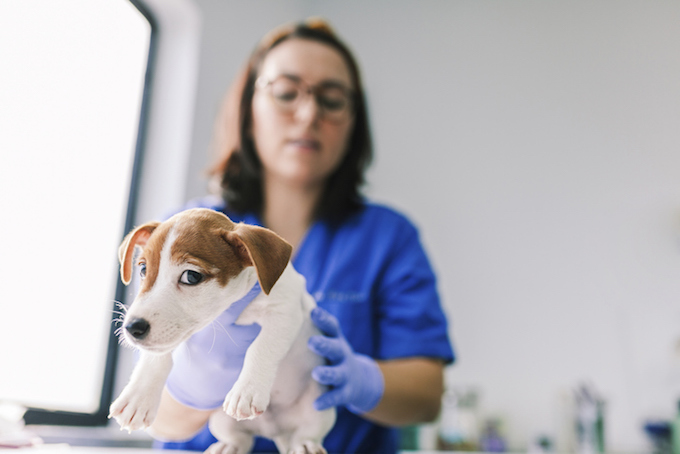Parasitic infection (microsporidiosis encephalitozoonosis) in dogs can cause neurological issues and convulsions. Thankfully, it is quite rare.
However, the condition can be passed from dogs to humans through poop, pee, and mucus.
Technically, the condition is caused by parasitic spores called E. cuniculi.
Sometimes, the condition is called simply microsporidiosis in dogs.
If you see the signs of the condition in your dog, then get to a veterinarian for a proper diagnosis and treatment.
Here’s what you should know about the symptoms, causes, and treatments for the condition.
Symptoms of Parasitic Infection (Microsporidiosis Encephalitozoonosis) in Dogs
The condition produces quite a range of symptoms. For example, some of the most common symptoms include:
- Weight loss
- Appetite loss
- Neurological problems
- Eye problems
- Convulsions
- Depression
- Poor coat quality
- Blindness
- Circling
- Stunted growth
- Kidney problems
Causes of Parasitic Infection (Microsporidiosis Encephalitozoonosis) in Dogs

The cause of the condition is parasitic spores called E. cuniculi. For example, some of the ways a dog can come into contact with the spores include:
- Inhaling spores
- Ingesting spores
- Infected poop
- Infected pee
- Kennel environments
- Infected mucus
- From infected rabbits
- From infected rodents
Additionally, the spores can be passed from a mom dog to her puppies through the placenta.
Treatments for Parasitic Infection (Microsporidiosis Encephalitozoonosis) in Dogs
Firstly, your vet will ask about your dog’s symptoms. Secondly, your vet will ask about any circumstances where your dog could have come into contact with the parasitic spores.
Thirdly, your vet will carry out a full physical examination. Also, blood and urine tests will be taken. Subsequently, the results of the tests can show whether your dog has been infected.
Generally, treatment often starts with fungicidal medication. Specifically, this is to clear the infection from the body. As always, if your vet prescribes your dog any medicine, make sure to stick to the correct dose and frequency instructions. Also, complete the full course of medicine.
However, in more severe cases where the infection has spread to vital organs, the condition might be considered fatal.
Ultimately, prevention is better than cure with this condition. For example, keeping a clean home environment for your dog and your family is key. Your vet can help offer suggestions on recommended cleaning products and techniques to ensure the condition doesn’t keep spreading.
Have you ever cared for a dog who suffered from this condition? How did your vet help your dog recover? Let us know in the comments section below.









